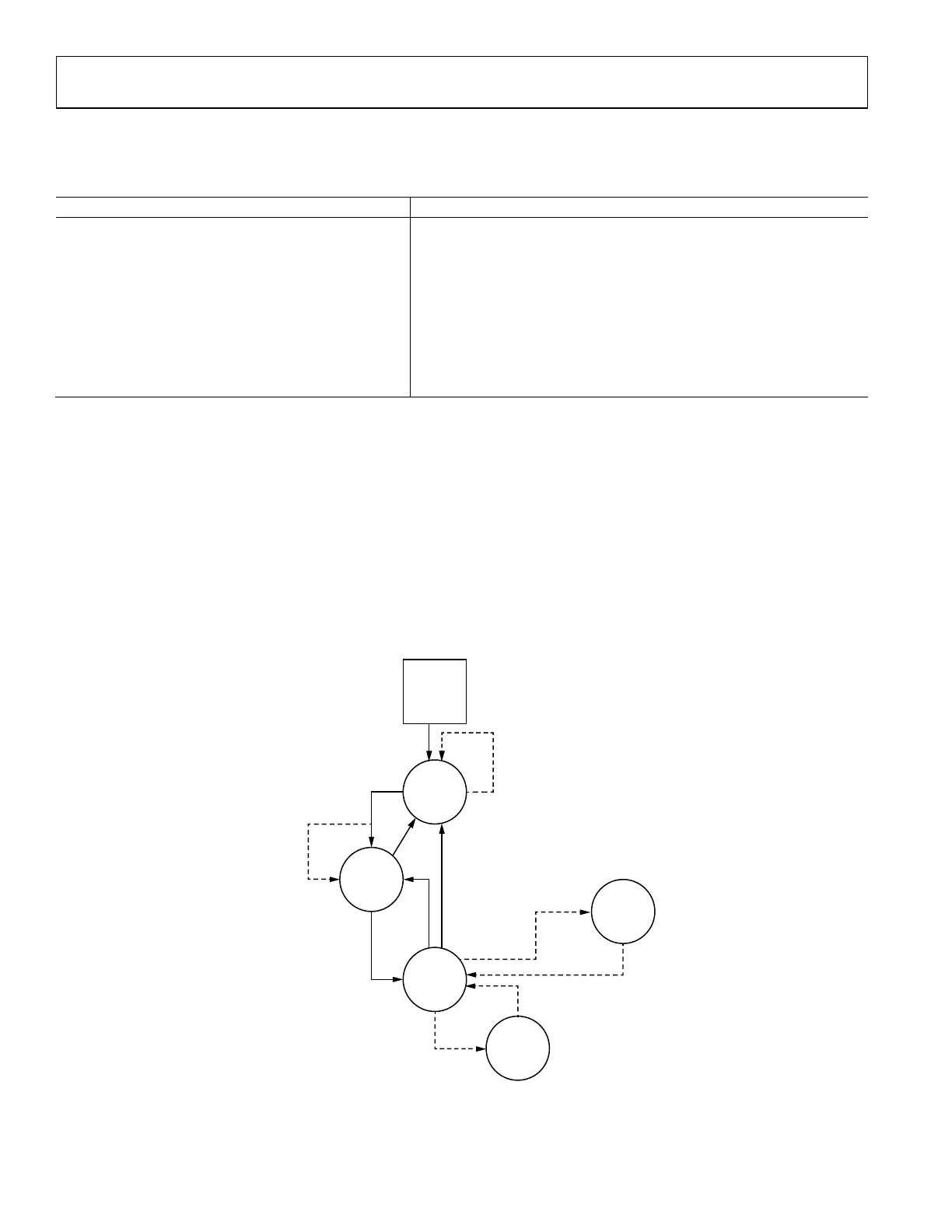UG-1828 Preliminary Technical Data
Rev. PrB | Page 100 of 277
ORx Operation
ADRV9001 supports ORx operation in frequency hopping mode. ORx in frequency hopping works in the same way as normal TDD
mode. During the actual Tx frame, the user can set the ORx enable signal high to enable ORx.
The user must then set ORx low (disable ORx) before the end of the frame. This is required regardless of whether the next frame is Tx or Rx.
The user must take the ORx setup and bring-down time into consideration, as well as the propagation delay of their profile.
Table 41. ORx Timing Parameters Time Required
Timing Parameter Time Required
tOrxRiseToOn 8 µs
tOrxFallToOff TBD
Table 42. ORx Timing Parameters Timing Restrictions
Timing Parameter Timing Restriction
tHopEdgeToORxRise Must be greater than the transition time, or tTxRiseToOn
tORxFallToHopEdge
Enough time for the ORx disable to complete. At least TBD us, however it is recommended to add some guard time
to that (for example, 1 µs)
When using ORx in frequency hopping, the user must take into consideration the following parameters when determining their frame
duration:
• ORx enable rising edge time (t
OrxRiseToOn)
• ORx enable falling edge time (t
OrxFallToOff)
• Propagation delay (t
propagationDelay)
The total time the ORx is enabled should be at least (t
OrxRiseToOn +tpropagationDelay) otherwise no valid data will be received.
24159-499
DWELL
DWELL
TRANSITION
TRANSITION
DWELL
TRANSITION
Tx
FRAME
Tx FRAME
Tx
FRAME
HOP
Tx SETUP
ORx ENABLE
ORx SETUPORx SETUP
Tx FRAME
ORx
FRAME
ORx ON ORx ON
ORx
FRAME
Figure 103. ORx Timing with Tx Setup
DIVERSITY MODE
The ADRV9001 supports diversity mode in frequency hopping, however, there are more timing considerations in which the user must
consider.
Primarily, there is increased time required for the ADRV9001 to prepare for an upcoming frame if two channels are enabled. This
increased time must be taken into consideration. This time is currently being characterized and more information will be updated in
future releases.
To enable two channels for diversity, the operation is like a 1T1R use case. However, the user must control the setup signal for both
channels. Prior to the first hop edge, the user must set channel 1 setup rising edge and channel 2 setup rising edge high. There is no
restriction on when these signals come relative to each other, however the last one set should be 1us prior to the hop edge (see frequency
hopping timing overview).

